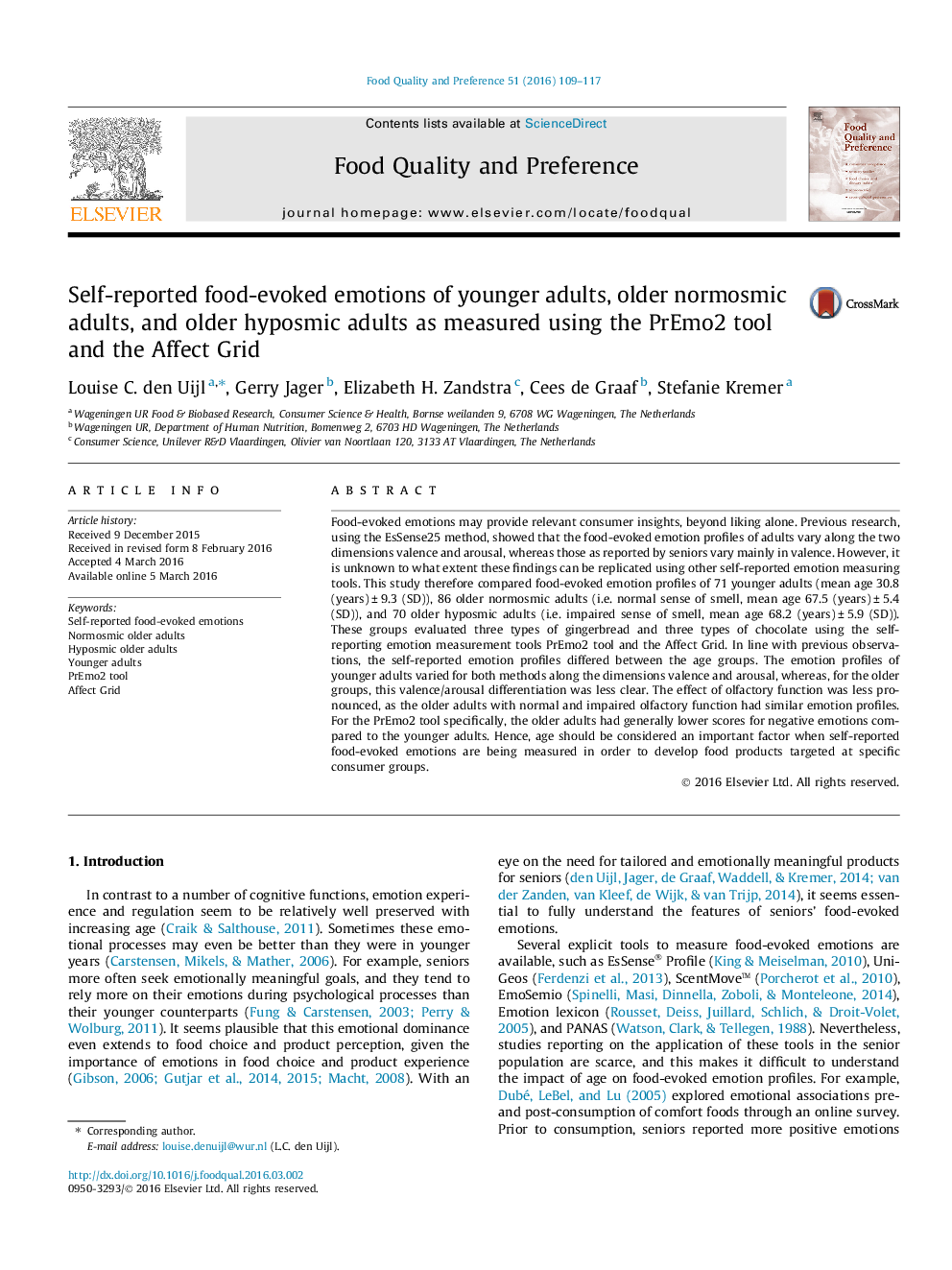| Article ID | Journal | Published Year | Pages | File Type |
|---|---|---|---|---|
| 4316868 | Food Quality and Preference | 2016 | 9 Pages |
•Food-evoked emotions of younger/older normosmic/older hyposmic adults were compared.•Age seems important when self-reported food-evoked emotions are being measured.•Younger adults’ emotion profiles varied along the dimensions valence/arousal.•Seniors’ emotion profiles did not clearly vary along the dimensions valence/arousal.•Seniors reported lower intensities for negative emotions than younger adults did.
Food-evoked emotions may provide relevant consumer insights, beyond liking alone. Previous research, using the EsSense25 method, showed that the food-evoked emotion profiles of adults vary along the two dimensions valence and arousal, whereas those as reported by seniors vary mainly in valence. However, it is unknown to what extent these findings can be replicated using other self-reported emotion measuring tools. This study therefore compared food-evoked emotion profiles of 71 younger adults (mean age 30.8 (years) ± 9.3 (SD)), 86 older normosmic adults (i.e. normal sense of smell, mean age 67.5 (years) ± 5.4 (SD)), and 70 older hyposmic adults (i.e. impaired sense of smell, mean age 68.2 (years) ± 5.9 (SD)). These groups evaluated three types of gingerbread and three types of chocolate using the self-reporting emotion measurement tools PrEmo2 tool and the Affect Grid. In line with previous observations, the self-reported emotion profiles differed between the age groups. The emotion profiles of younger adults varied for both methods along the dimensions valence and arousal, whereas, for the older groups, this valence/arousal differentiation was less clear. The effect of olfactory function was less pronounced, as the older adults with normal and impaired olfactory function had similar emotion profiles. For the PrEmo2 tool specifically, the older adults had generally lower scores for negative emotions compared to the younger adults. Hence, age should be considered an important factor when self-reported food-evoked emotions are being measured in order to develop food products targeted at specific consumer groups.
